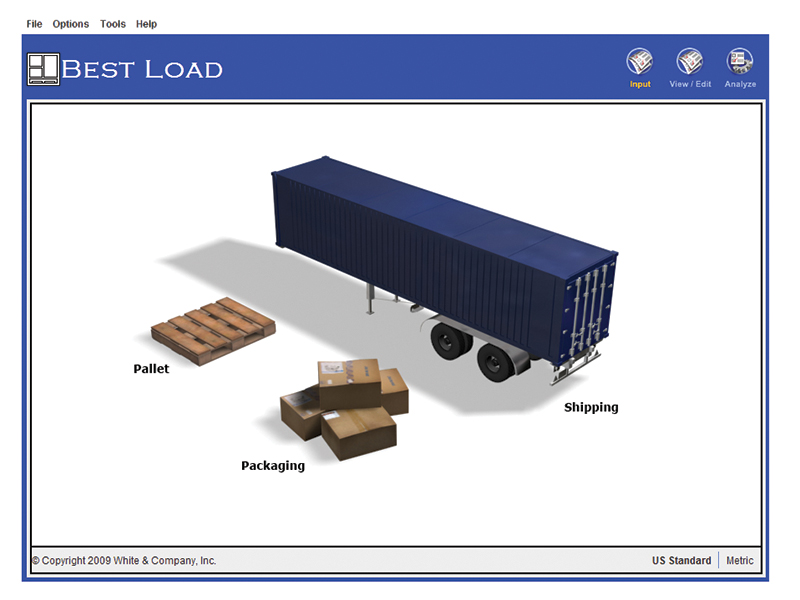After more than 30 years of applied research, Marshall White—professor emeritus and former director of Virginia Tech’s Center for Packaging and Unit Load Design—developed Best Load, a design and structural analysis tool that allows users to optimize unit loads.
“Whether that be from a structural standpoint by predicting the unitized stress distribution, or the compression strength of the packaging, or the strength and stiffness of the pallet, Best Load models an existing or a prototype unit load and identifies any areas of under- or over-design,” explains Braden White, executive director of Marshall White’s packaging research and consulting firm, White & Company.
The software, offered for annual lease, allows supply chains to focus more sharply on the performance and cost of the packaging system, as opposed to considering solely pallet performance and cost, White continues.
“Best Load applies a variety of methods to improve the performance of an entire packaging system while simultaneously reducing cost and modifying the pallet design as needed,” he says. “There’s been a movement among companies away from component-based to systems-based design—designing multiple elements in unison to create the optimal unit load prior to field trialing and implementation.”
Using sophisticated 3D space-frame finite element analysis (FEA) models, the tool predicts the mechanical interactions between the packaging system, pallet and storage/handing conditions, and the compression stress distribution at the pallet deck interface. The lower the stress, the greater the opportunity to bolster performance and reduce costs, White adds, noting that users typically reduce packaging costs from 8% to 18%.
In addition to providing a greater understanding of a given pallet design’s strength and stiffness, Best Load also predicts the strength of corrugated distribution packaging options and how each will react under the intended, compressive load.
“It can also be used to maximize the efficiency of packaging orientations on pallets and unit-load layouts inside any shipper,” White adds. “Once the container style is selected, Best Load sets a default load limit—which can be modified as needed—then cubes out or weighs out the chosen shipper with multiple layout solutions. It also displays the dimensions of any void spaces within the layout, making it easy to specify dunnage.”
Article topics








